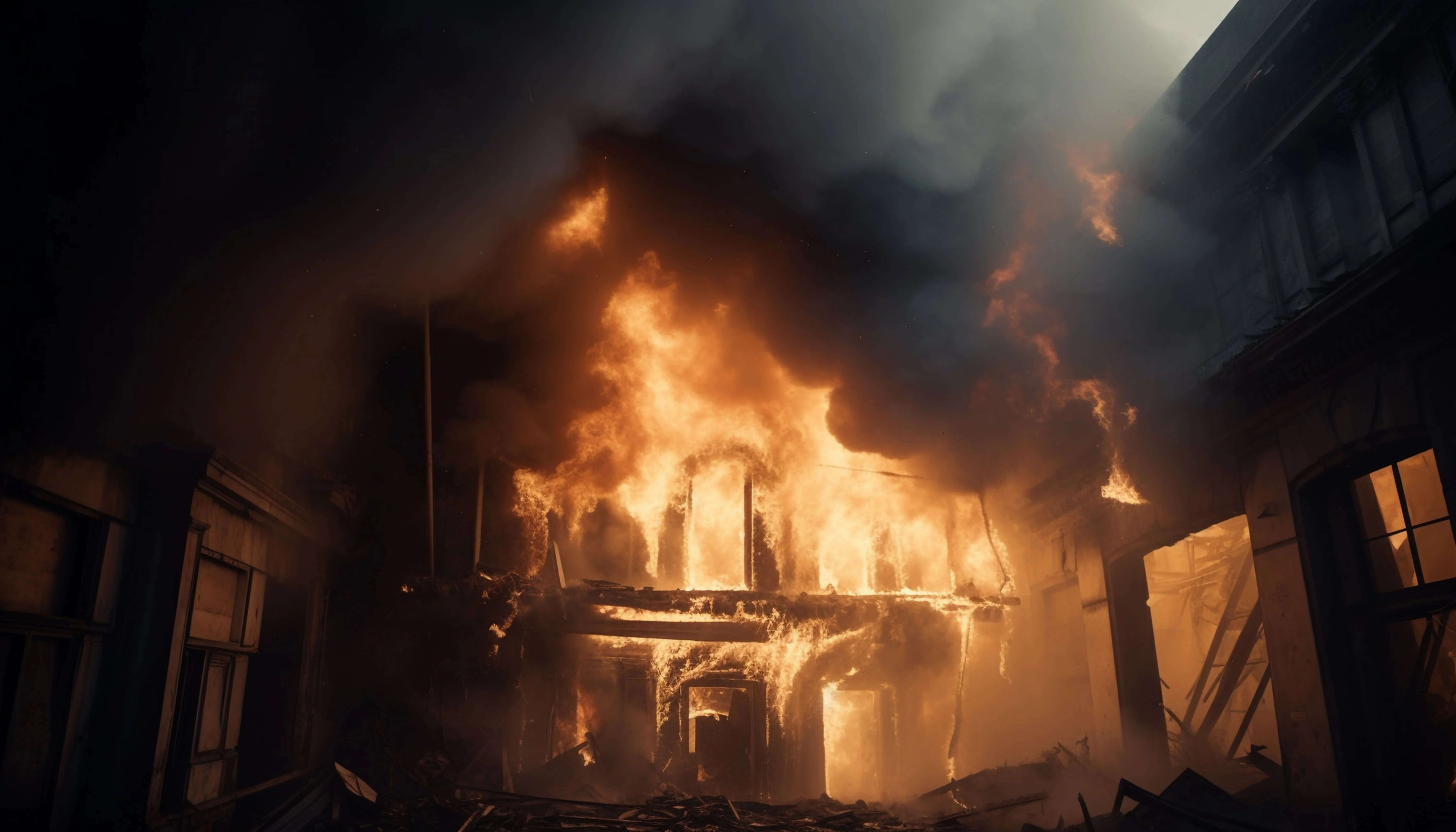Imagine stepping into the aftermath of a blast. Walls pushed outward, windows shattered, and debris scattered far and wide. The destruction is unmistakable, but the cause isn’t immediately clear. What’s the first clue you’d look for as a fire investigator?
Faster fire reports?
Get a two week free trial and
price quote just for your organization.
Get free trial
Trusted by Public & Private Fire Investigator Teams
Scenes like these often point to a diffuse explosion—a unique and devastating phenomenon caused by dispersed fuel-air mixtures igniting across a large area. This guide unpacks the science, evidence, and strategies behind diffuse explosions, equipping you to approach these complex investigations with confidence.
What Are Diffuse Explosions?
Diffuse explosions happen when a combustible gas, vapor, or fine particulate mixes with air and ignites. Unlike concentrated detonations, these explosions produce broad, low-velocity damage that spreads outward, often symmetrically.
Key Features of Diffuse Explosions
- Wide Area Damage: Large spaces, like rooms or entire buildings, are affected.
- No Crater Formation: There’s no single concentrated blast point.
- Pressure Wave Evidence: Walls, doors, and windows are blown outward.
- Burn Marks: Multiple ignition traces may appear across the blast zone.
Picture a natural gas leak in a home. If ignited by a spark from a light switch, the resulting explosion disperses force evenly, leaving distinct pressure patterns but no deep point of origin.
Understand the Science Behind Diffuse Explosions
At the core of a diffuse explosion lies the interplay between fuel, air, and ignition. Three critical conditions must align:
- The Right Fuel-to-Air Ratio: The mixture must fall within the flammable range of the substance. For example, natural gas ignites at concentrations between 5-15% in air.
- An Ignition Source: Sparks, static electricity, or open flames can all trigger the reaction.
- Confinement Effects: When the mixture is enclosed, the pressure wave intensifies, amplifying damage.
Fuel Types Table
| Fuel Type |
Flammable Range (in Air) |
Common Scenarios |
| Methane (Natural Gas) |
5-15% |
Home or industrial gas leaks |
| Gasoline Vapors |
1.4-7.6% |
Fuel spills in enclosed spaces |
| Grain Dust |
0.04-0.06 oz/ft³ |
Silo or processing plant fires |
Knowing these parameters can help you evaluate the conditions that led to an explosion.
Signs That Point to a Diffuse Explosion
When examining a fire scene, look for these clues to identify a diffuse explosion:
- Wide, Symmetrical Damage: Walls and windows pushed outward evenly, without a central blast point.
- Burn Traces Across the Area: Multiple ignition points and soot marks indicate dispersed combustion.
- Residual Fuels: Chemical testing may detect lingering gases, vapors, or dust particles.
- Absence of High-Velocity Fragments: Shrapnel is rare, as the explosion’s energy disperses more slowly.
Recognizing these indicators can help you distinguish a diffuse explosion from other events, such as detonations or deflagrations.
4 Steps to Investigate a Diffuse Explosion
When investigating a scene with a diffuse explosion, follow these four steps to ensure you don’t overlook any important clues or evidence.
- Document the Scene Thoroughly
Start with a comprehensive visual record. Use high-resolution photography, 3D mapping, and sketches to capture damage patterns and the blast area.
- Trace Blast Direction and Origin
Analyze structural damage to map the pressure wave’s movement. This can help you locate the fuel-air mixture’s ignition point.
- Collect Residual Evidence
- Gather samples of gases, vapors, and fine particulates for lab analysis.
- Investigate appliances, electrical wiring, and other potential ignition sources.
- Evaluate Environmental Factors
Assess the role of ventilation, humidity, and temperature, as these can influence how the fuel dispersed and ignited.
Systematic steps like these can turn a chaotic scene into a clear narrative.
Challenges in Diffuse Explosion Investigations
Diffuse explosions pose unique challenges, including:
- Widespread Damage: Large-scale destruction can obscure ignition points and initial fuel sources.
- Multiple Ignition Possibilities: Sparks from electrical equipment, friction, or static electricity complicate the search for a definitive trigger.
- Environmental Variability: Changes in airflow or humidity can alter how the explosion occurred, making the evidence harder to interpret.
Navigating these complexities requires sharp analytical skills and collaboration with specialists in chemistry, engineering, and explosion dynamics.
Build Expertise in Diffuse Explosion Analysis
There are several resources available for investigators who want to gain knowledge and build their expertise in diffuse explosion investigations. Here are a few ways to get started.
Learn Combustion Science
Study the flammable ranges and ignition characteristics of common fuels to refine your assessments.
Pursue Advanced Training
Enroll in workshops or certifications focused on gas and vapor explosion investigations.
Use Cutting-Edge Tools
Leverage gas detectors, computational modeling software, and forensic analysis tools to enhance your findings.
Collaborate with Experts
Work alongside chemists, engineers, and explosion analysts to deepen your understanding and broaden your investigative approach.
Solve the Puzzle of Diffuse Explosions
Diffuse explosions leave behind a wide, chaotic scene, but with the right knowledge, you can bring order to the aftermath. By understanding their science, recognizing key signs, and applying systematic strategies, you’ll uncover the truth behind these destructive events.
Every explosion tells a story. With your expertise, no detail will go unnoticed, and no case will remain unsolved.











